Greece has a long and illustrious history and is considered the birthplace of Western civilization, including Western philosophy and literature, democracy, political science, and major mathematical and scientific discoveries. It is not just Greece’s ancient history that is fascinating either – the medieval period was dominated by the Byzantine Empire and its later struggles against the Venetians and Ottoman Turks.
It was against this backdrop that many of Greece’s castles were constructed, to protect territory, defend trade routes, and establish the authority of a multitude of rulers. Below is a list of some of the most spectacular palaces and castles in the country.
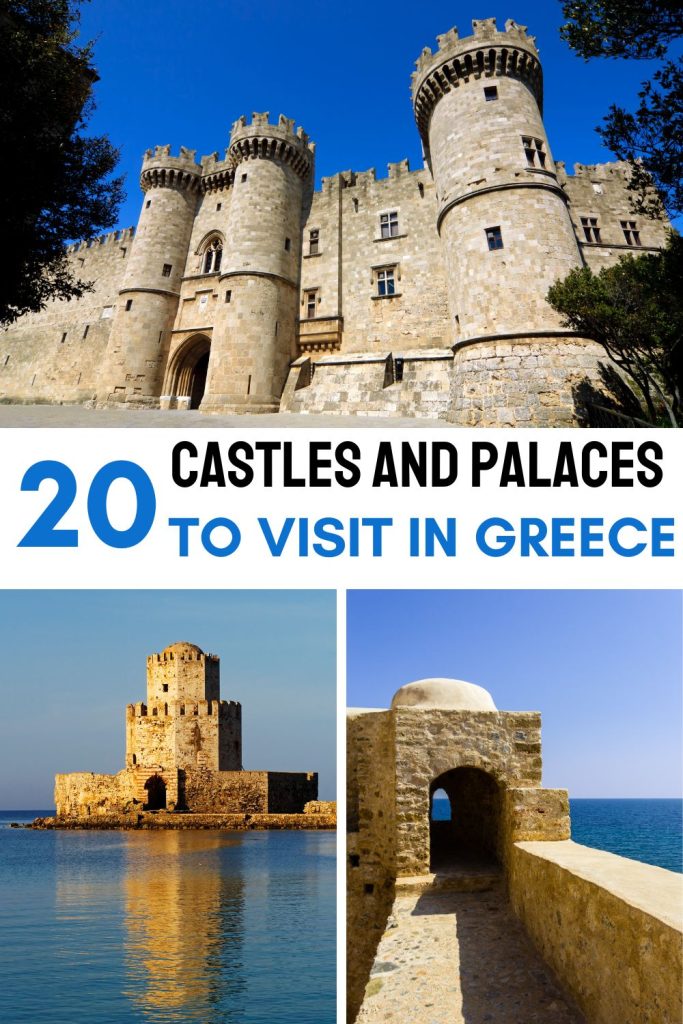
- 20 Greek Castles and Palaces to Visit
- Palace of the Grandmaster of the Knights of Rhodes
- The Minoan Palace of Knossos
- Sisi Palace (Achilleion Palace)
- Tatoi Palace
- Old Royal Palace of Athens
- Fortezza of Rethymno
- Castle of Astypalaia
- Ioannina Castle
- Methoni Castle
- Koroni Castle
- Palamidi Castle (Nafplio)
- Monemvasia Castle
- Mystras Castle
- Nafpaktos Castle (Lepanto)
- Kavala Castle
- Kythira Castle
- The Castle of Mytilene
- Leros Castle
- Monolithos Castle
- Mithymna Castle (Molyvos)
20 Greek Castles and Palaces to Visit
Palace of the Grandmaster of the Knights of Rhodes
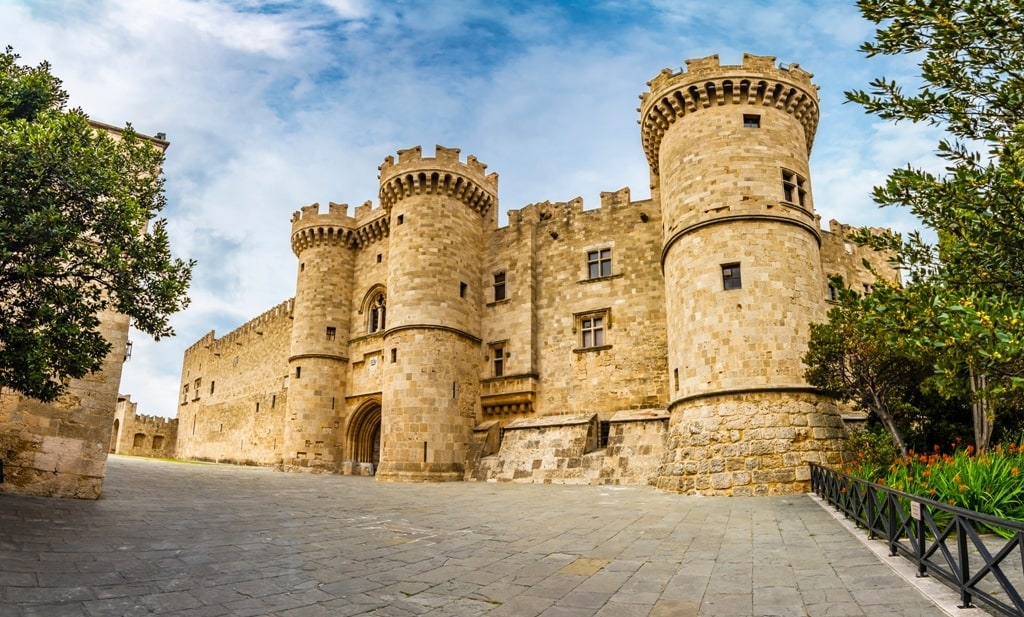
This ‘Palace’ in the city of Rhodes, on the Greek island of Rhodes, is in fact a medieval castle, and one of the very few examples of Gothic architecture in Greece. Originally constructed as a Byzantine citadel in the 7th century, the site was later occupied by the order of the Knights Hospitaller in 1309 and converted into an administrative center and palace for the Grandmaster of the order. After Rhodes was captured in 1522 the palace was used as a fortress by the Ottomans.
The Minoan Palace of Knossos
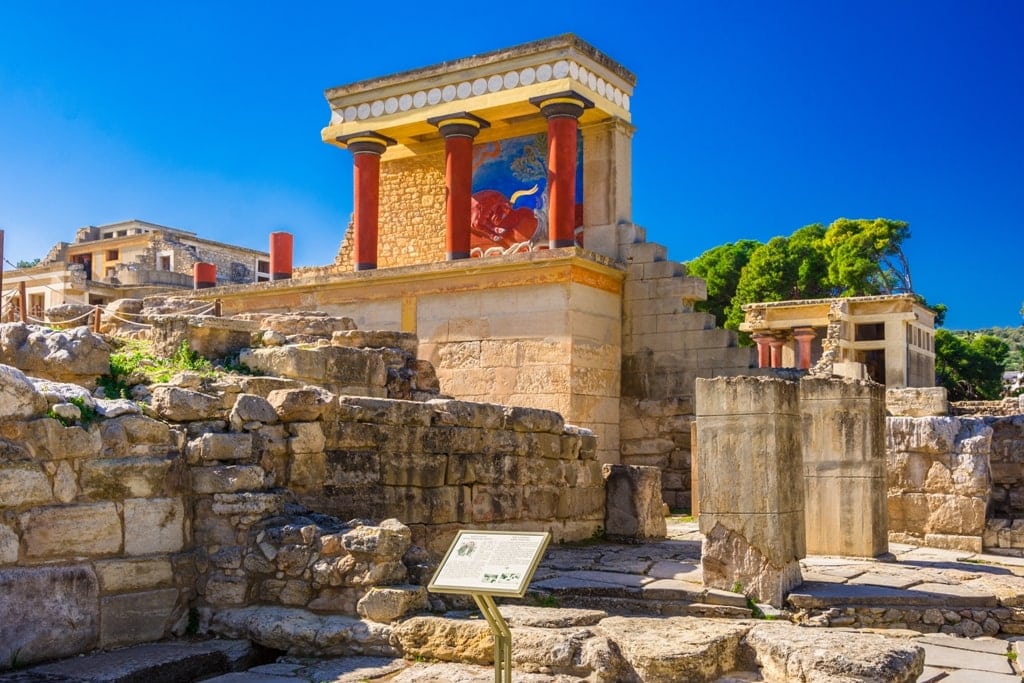
Located just south of Heraklion, the capital of Crete, the Minoan Palace of Knossos has been identified as the oldest city in Europe. Although it was settled as early as the Neolithic period, Knossos flourished during the period of the Minoan civilization on Crete, from around 3000-1400 BC.
At its height (around 1,700 BC), the enormous palace, covering an area of three acres, stood at the center of a large city with a population of some 100,000 people. It is unclear who lived at the palace, and it has been suggested that it could have been inhabited by priest-kings and queens of a theocratic government.
Sisi Palace (Achilleion Palace)
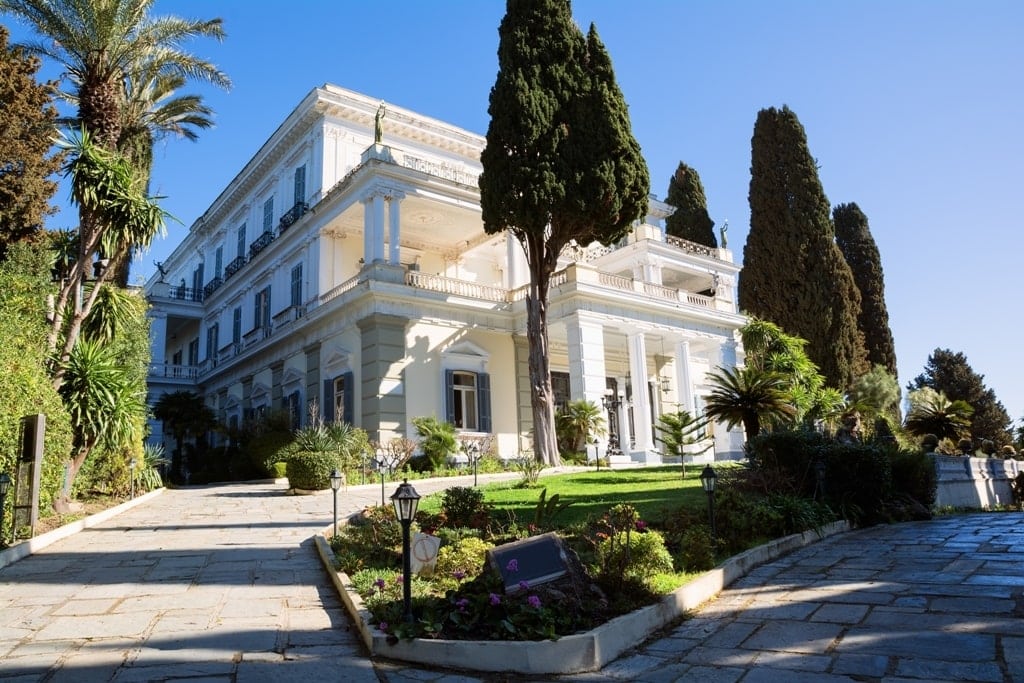
The Sisi Palace or Achilleion Palace is a summer residence in Gastouri on the island of Corfu, constructed for the Empress Elisabeth of Austria. Standing 10 kilometers south of the city of Corfu, the palace offers incredible views of the south of the island and the Ionian Sea.
It was built principally as a retreat for the grieving Empress, who had lost her only son Crown Prince Rudolf in the Mayerling incident of 1889. The architectural style is reminiscent of an ancient Greek palace, with motifs of the mythological hero Achilles, inspired by Elisabeth’s love of Greek culture.
Tatoi Palace

Tatoi was the estate and summer palace belonging to the Greek Royal Family until it was confiscated in 1994 by the Greek government. Standing in a 10,000-acre wooded estate on the southeast-facing slope of Mount Parnitha, to the north of Athens, the palace was obtained by the royal family in the 1880s, when King George I purchased the site.
Today the estate and palace remain in the hands of the Greek state, which intended to restore the site. When the government announced its plans to sell the estate in 2012, the ‘Friends of Tatoi Association formed with the aim of restoring the site and converting it into a museum.
Old Royal Palace of Athens
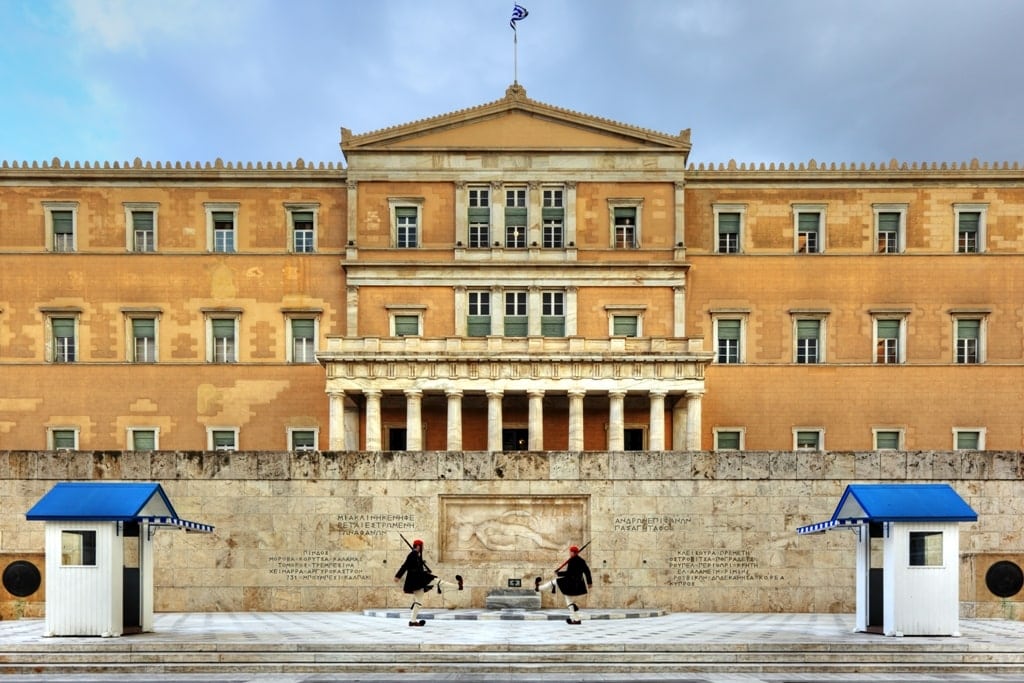
The first royal palace of modern Greece, the Old Royal Palace in Athens was completed in 1843 and has been the home of the Hellenic Parliament since 1934. Designed for King Otto of Greece by the Bavarian architect Friedrich von Gartner, the palace stands at the very heart of the Greek capital, with its main façade facing onto Syntagma Square.
After the abolition of the monarchy in 1924, the palace was used as a governmental administrative building, housing public services, before becoming a makeshift hospital in World War Two.
Fortezza of Rethymno
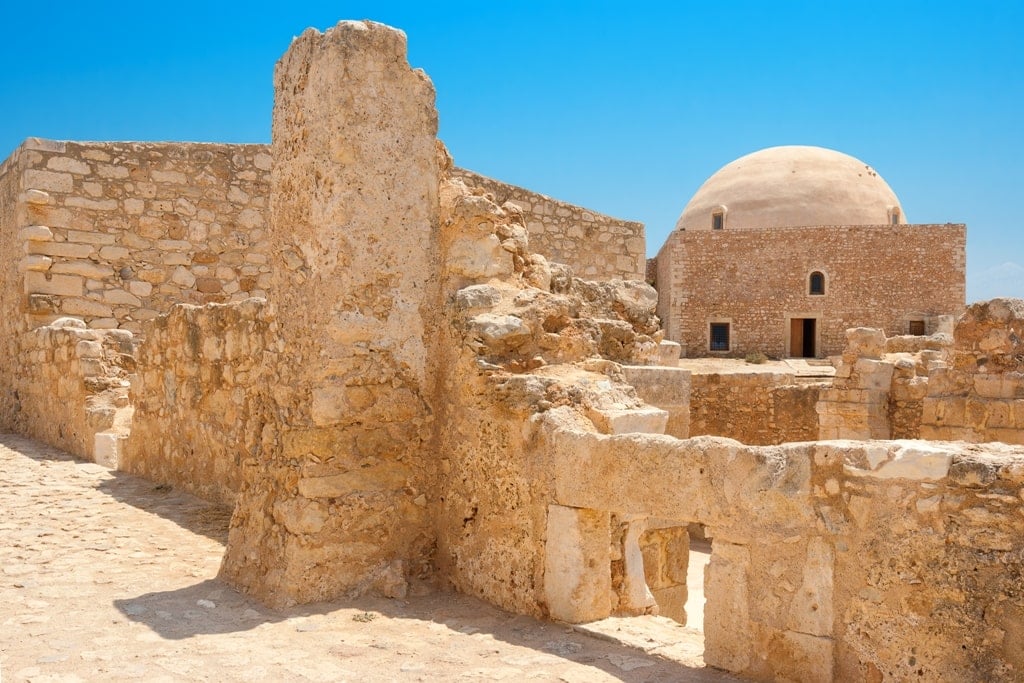
Built by the Venetians in the 16th century, the Fortezza (Italian for ‘fortress’) is the citadel of Rethymno on the island of Crete. The fortification stands on a hill called Paleokastro (‘Old Castle’), the site of the ancient city of Rhithymna’s acropolis. Before the Venetians, the Byzantines occupied the area with a fortified settlement between the 10th and 13th centuries.
The current fortress was completed in 1580, intended to defend the area from the Ottomans who had taken Cyprus from the Venetians in 1571. In November 1646 the fortress fell to the Ottomans, and they made use of the fortification without making major alterations. Restoration works have been active since the 1990s, and this spectacular site is currently open to the public.
Castle of Astypalaia
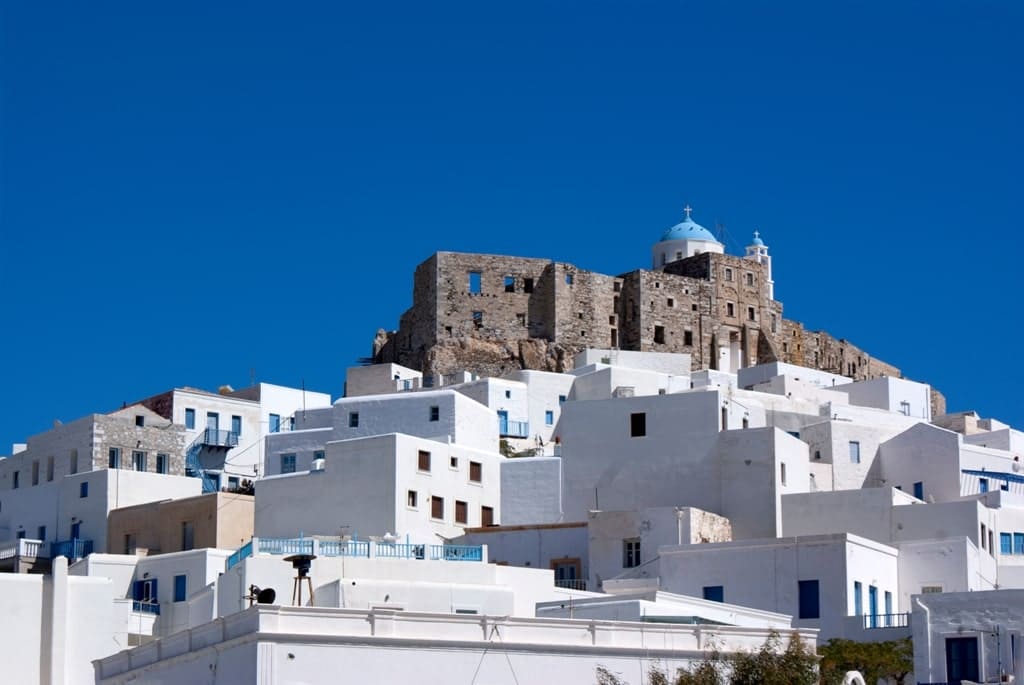
Also called Querini Castle, this fortification stands at the top of the hill above the town of Chora on the Greek island of Astypalea. The island belonged to the Byzantines until it passed into the possession of the Venetian Querini family following the 1204 Fourth Crusade.
The Querini built the castle, lending their name to it – it crowns the hill around which Chora is constructed, its dark stone walls contrasting with the while-walled homes of the town below.
When the island was taken by the Ottomans in 1522 the castle remained under Ottoman control until 1912, when it was taken by Italian troops. Under the 1947 Treaty of Paris, the island once again became part of Greece.
Ioannina Castle
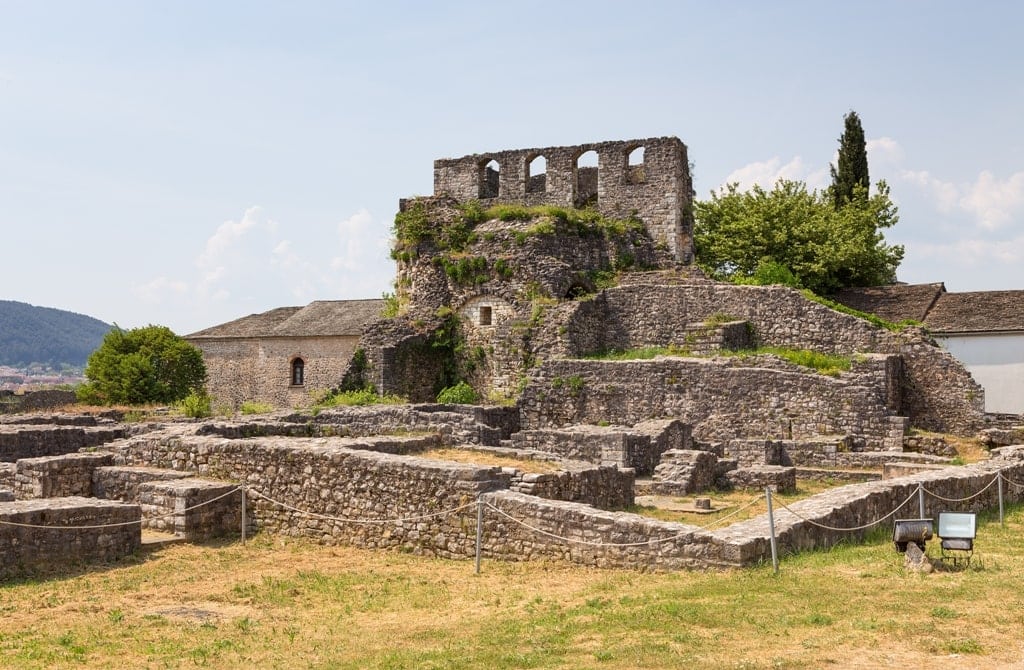
The castle at Ioannina is in the old town of the city of Ioannina, which was likely first fortified in the 4th or 3rd century BC. Later Byzantine fortifications were also added – the city is mentioned in a 1020 decree by Basil II.
The form of the modern castle dates from the late 18th and early 19th centuries when the town of Ioannina formed part of the region ruled by the Ottoman lord Ali Pasha. Pasha’s reconstructions of the Byzantine walls, completed in 1815, incorporated and supplemented the existing walls, and added an additional wall in front.
Methoni Castle
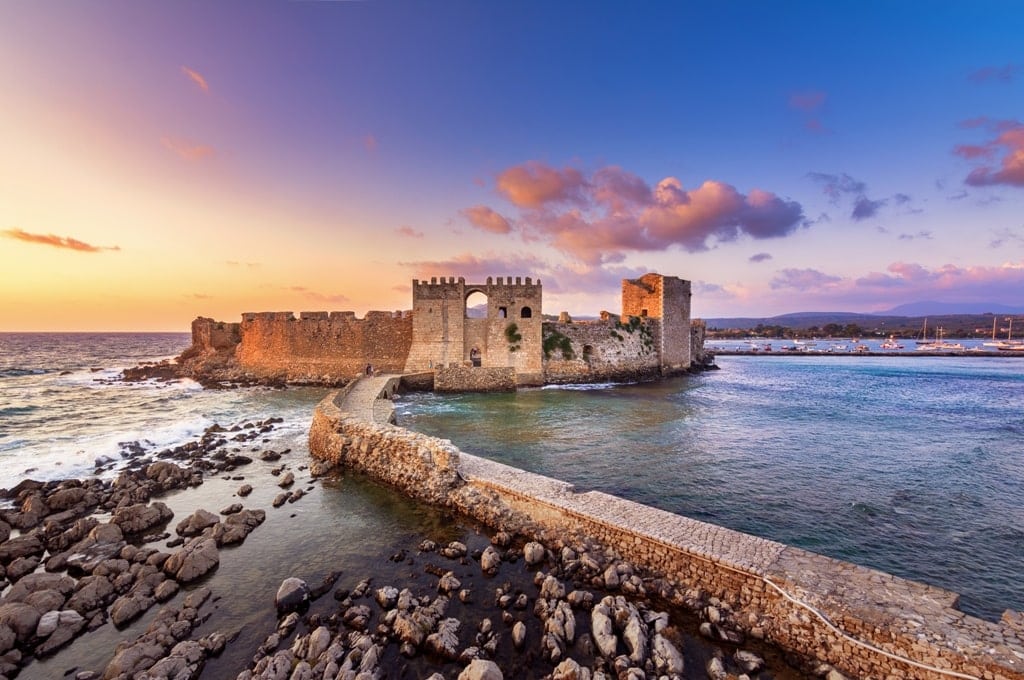
Methoni is a coastal town in southwestern Greece, which features a medieval castle. The castle itself encompasses a promontory that juts out into the sea to the south of the town, as well as a small islet.
Built by the Venetians in the 13th century, the castle is separated from the town by a deep moat, which can be crossed by a long stone bridge with 14 arches. Methoni is very large, with thick, imposing walls – it also features a stone tower and surrounding wall on the small islet of Bourtzi which lies immediately south of the main castle.
Koroni Castle
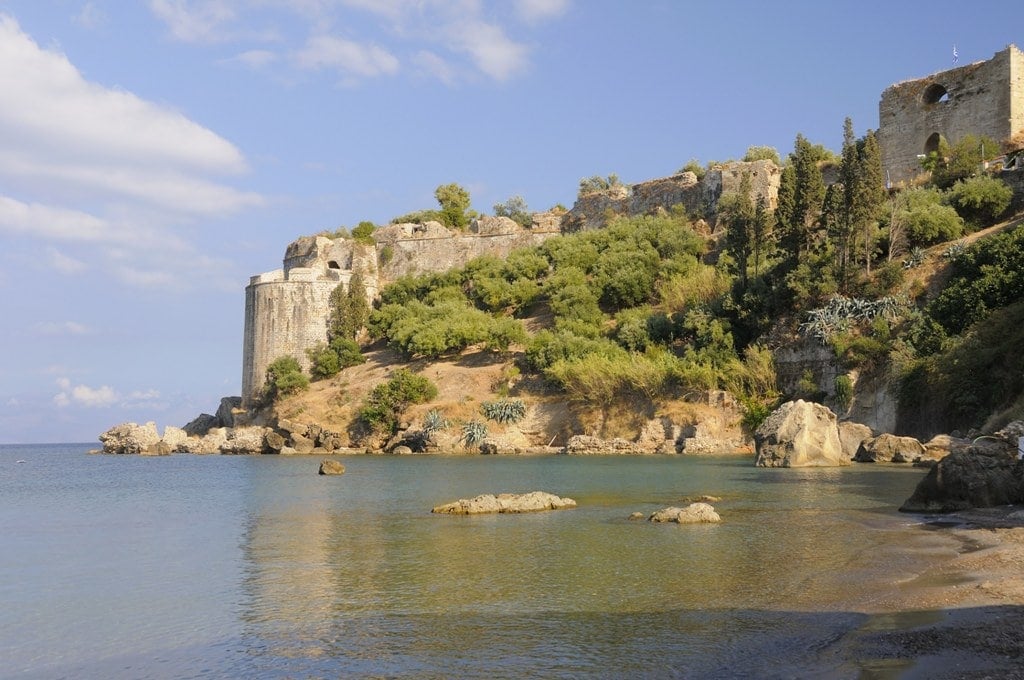
This 13th-century Venetian castle is located in the town of Koroni, in the southwest of the Peloponnesian peninsula, Greece. The fortification stands on Akritas cape, itself on the southern edge of the Messinian Gulf.
The town of Koroni was an ancient foundation and was home to a Byzantine bishopric – after the Fourth Crusade of 1204, the town was claimed by the Venetians. It became an important way station for trading ships traveling east and west, and the castle was therefore built to protect the town.
Palamidi Castle (Nafplio)
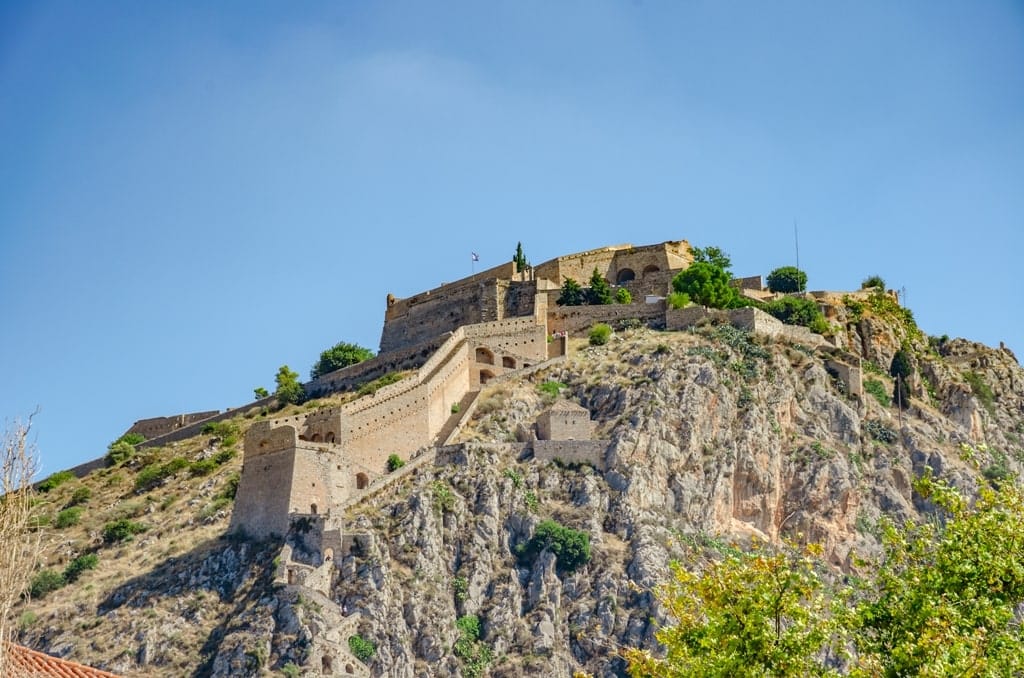
Standing to the east of the town of Nafplio in the Peloponnese, Palmidi is a large and imposing fortress constructed by the Venetians from 1711 to 1714. The fortification stands on the crest of a 216-meter-high hill, making approach by besiegers incredibly difficult.
Despite this, the Baroque fortress was captured by the Ottomans in 1715, and again by the Greeks in 1822. With its eight impressive bastions, Palamidi overlooks the Argolic Gulf and the city of Nafplio – visitors can climb over 1000 steps to enjoy this fantastic view.
Monemvasia Castle
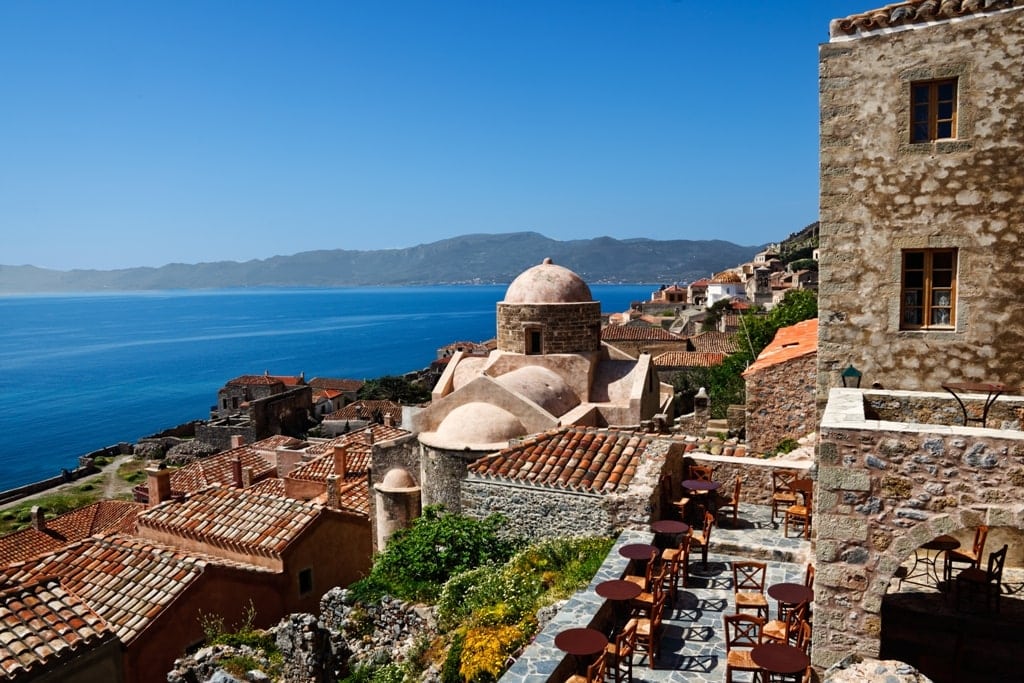
Monemvasia Castle stands in a town of the same name, located on a small island off the eastern coast of the southeastern part of the Peloponnese. The island is linked to the mainland by a causeway and is dominated by a large plateau around 100 meters tall and 300 meters wide, on top of which the castle stands.
The isolated position of the castle is reflected in its name – Monemvasia comes from two Greek words, mone, and emvasia, meaning ‘single entrance’. The town and its fortress were founded in the 6th century and by the 10th century, the town had become an important trading center. The castle withstood Arab and Norman invasions and was subjected to several sieges throughout the medieval period.
Mystras Castle
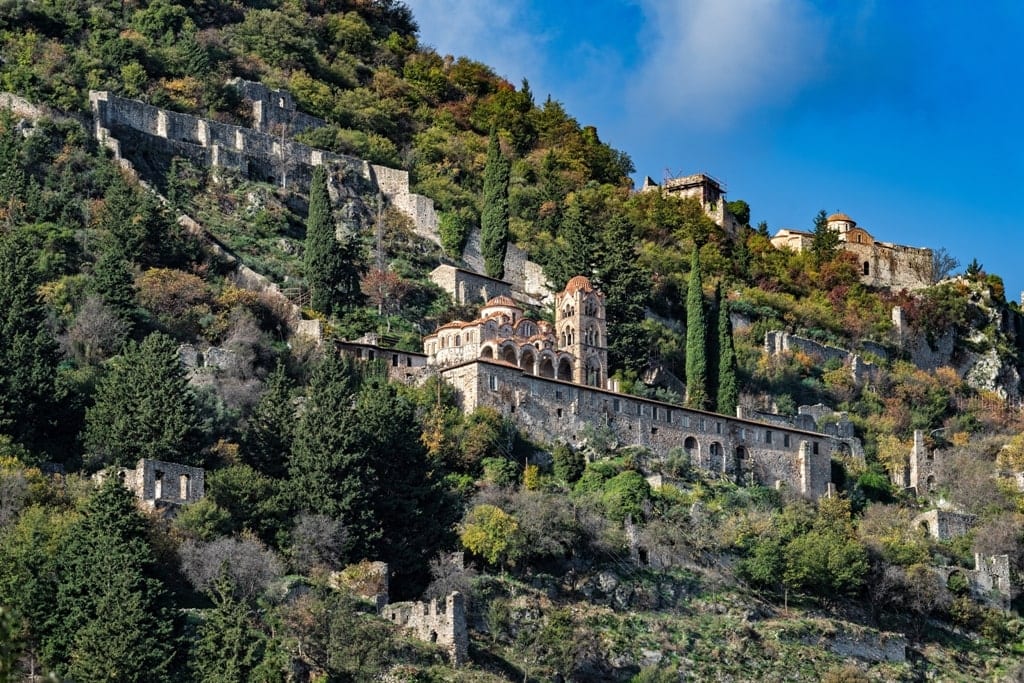
Built on Mount Taygetos near Ancient Sparta, the fortress of Mystras was constructed in 1249 by William II of Villehardouin, the ruler of the Frankish Principality of Achaea, following his completion of the conquest of Laconia.
To secure his new domain, he ordered Mystras to be built, but he soon lost his new fortification – after being captured by the Nicaean Emperor Michael VIII Palaiologos in 1259, William had to cede Mystras to his captor to regain his freedom.
Later the town and fortress became the residence of the Byzantine Despots who ruled over the ‘Despotate of Morea’. The site was surrendered to the Ottomans in 1460.
Nafpaktos Castle (Lepanto)
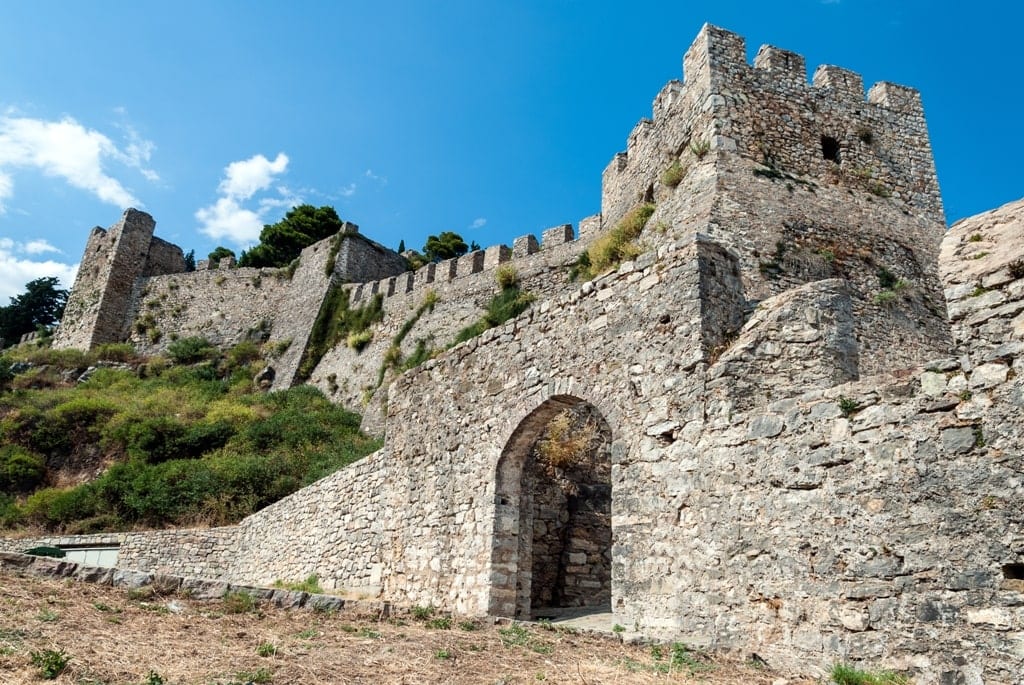
Standing on the hillside overlooking the harbor town of Nafpaktos, the Castle of Nafpaktos was a Venetian construction of the 15th century – although the site has been occupied since ancient times.
Thanks to its strategically important location in the Gulf of Corinth, Nafpaktos has been used as a naval base by the ancient Athenians, the Byzantines, the Venetians, and the Ottomans. The 1571 battle of Lepanto, in which the combined forces of the Holy League defeated the Ottoman navy, was fought nearby.
Kavala Castle
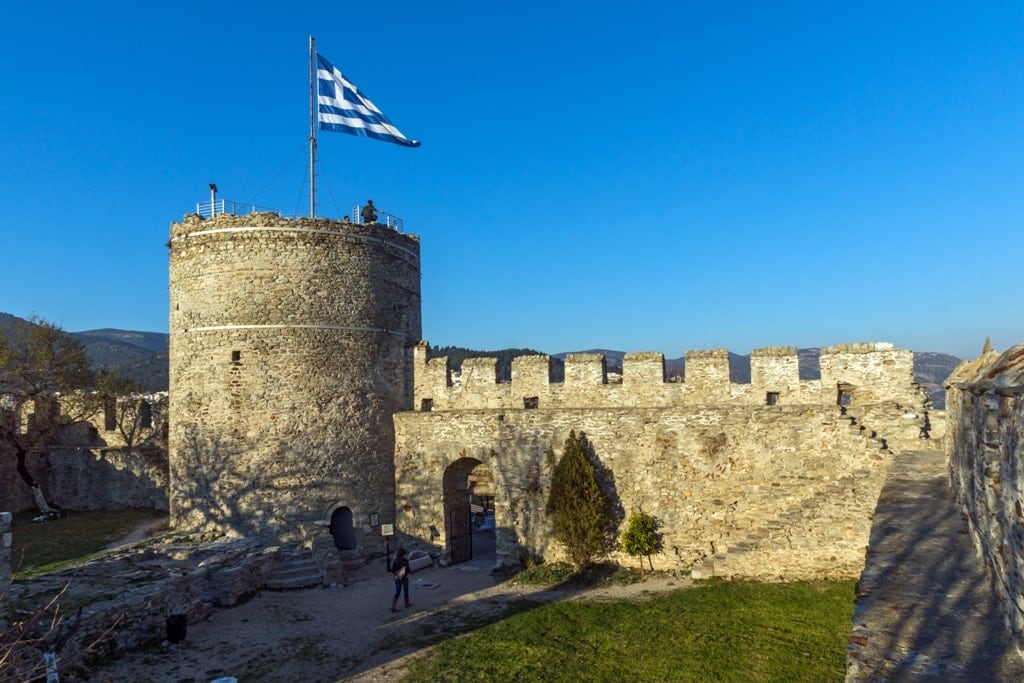
Kavala is a city in northern Greece and a major seaport, situated in eastern Macedonia, although it was known as Neapolis in antiquity, and was named Christoupolis during the Middle Ages. The site was fortified by Byzantine Emperor Justinian I in the 6th century to protect it from barbarian raiding, surrounding the city with high walls and towers.
The Ottoman Turks captured the city in the late 14th century, and much of the Byzantine defenses were badly damaged – the fortifications that stand at Kavala today are primarily Ottoman reconstructions, although they were based on the original fortress design.
Kythira Castle
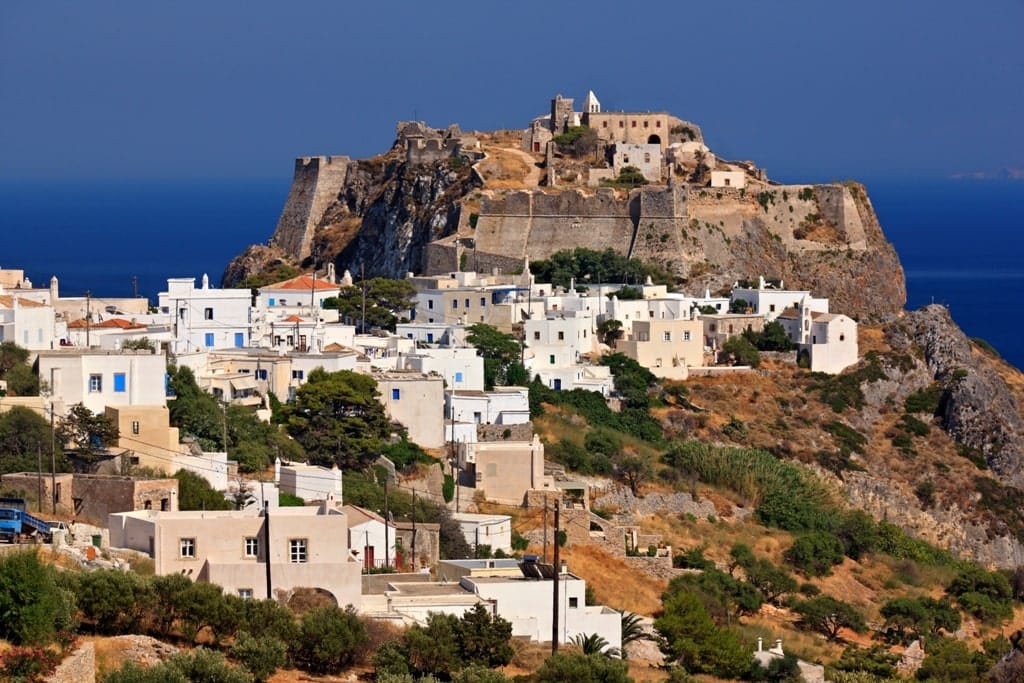
Situated in the town of Kythira (Chora) on the island of the same name, Kythira Castle is an early 13th-century Venetian castle built on high cliffs above the town. The island is in a strategic location off the southern tip of the Peloponnese peninsula and has therefore historically acted as a trading crossroads, as well as being the key to accessing Crete.
The Venetians built the fortification to protect their trade routes in the region, and it remained an important outpost for preventing pirate raids into the modern period.
The Castle of Mytilene
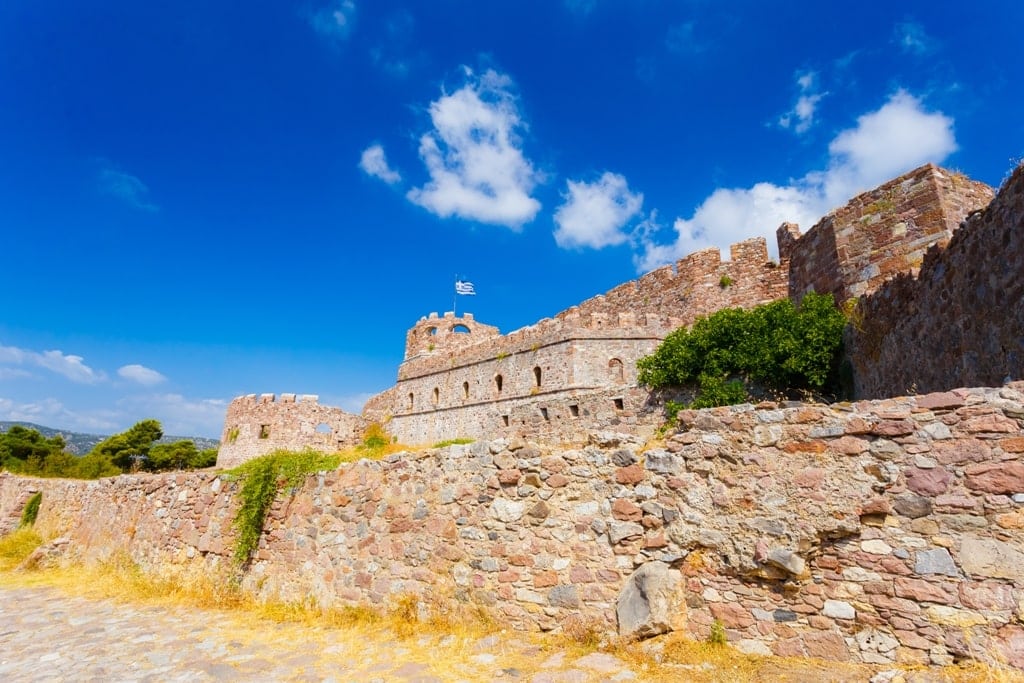
Standing in the city of Mytilene on the Greek island of Lesbos, this well-preserved fortress is one of the largest in Europe, covering some 60 acres. The castle was built on a hill between the northern and southern ports of Mytilene – although it was likely first constructed by the Byzantines in the 6th century, it occupied the site of the ancient acropolis of the city.
In the 1370s, Francesco I Gattilusio modified the existing fortifications and added a section known as the middle castle. After the Ottomans took the castle in 1462, they also made several later additions to the site, including adding another layer of walls and a large moat.
Leros Castle
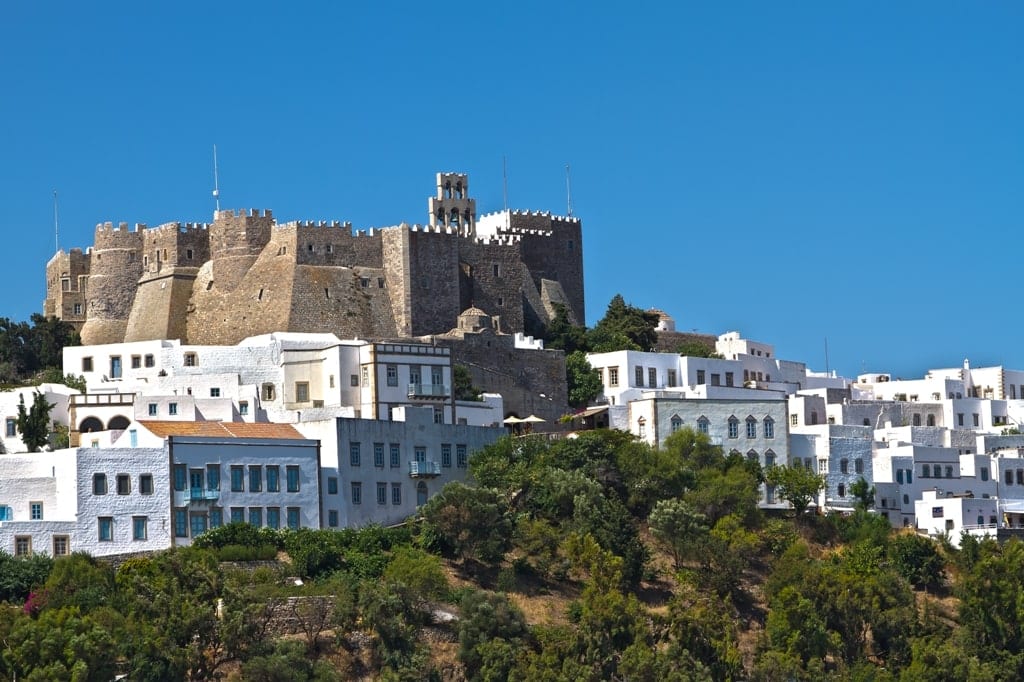
Located 20 miles from the Turkish coastline, Leros is a small island that is home to Leros Castle, also called the Castle of Panteliou or the Castle of Panagia. Commanding the northern side of the island, the castle, which was likely built in the 11th century, stands atop a rocky hill. It features a powerful outer wall with several bastions.
In the 13th century, the island and its castle fell to the Genoese, before finally passing into Venetian hands. In 1309 Leros entered the possession of the Knights of Saint John – it was this holy order who defended the island successfully from Ottoman invasion in 1505 and 1508. The order finally agreed to withdraw from the castle in 1522 after signing a treaty with the Ottoman Sultan Suleiman.
Monolithos Castle
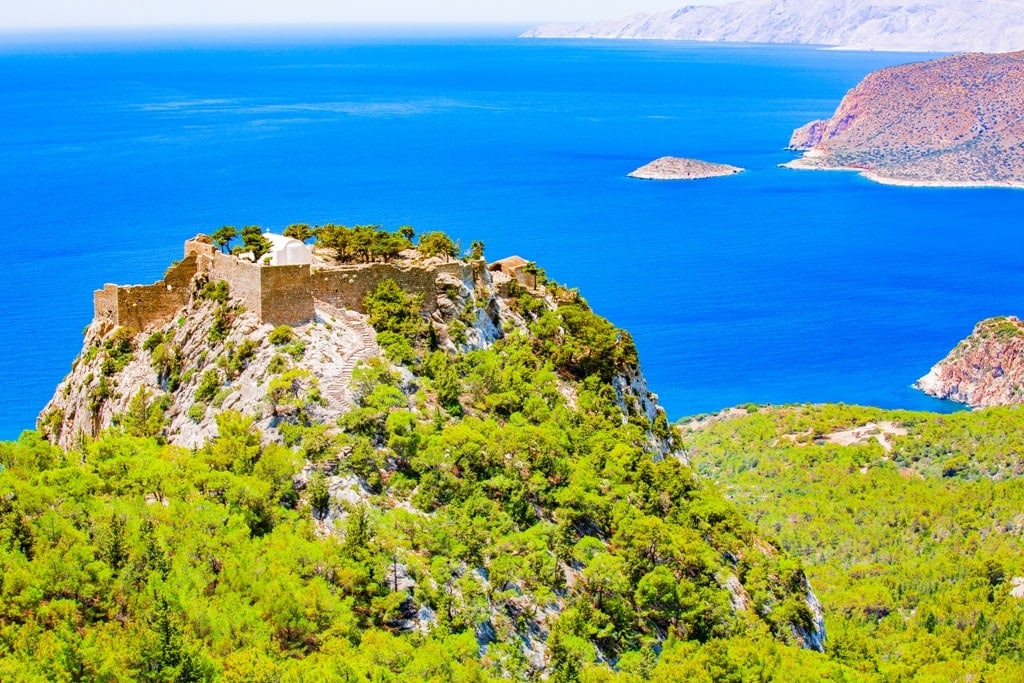
Monolithos is a 15th-century castle in the west of the island of Rhodes, constructed by the Knights of the Order of Saint John. Built in 1480 to protect the island from attacks, the castle was in fact never conquered. From its position on a 100-meter-tall rock, Monolithos offers visitors spectacular views out across the sea. Inside the ruined castle is a small chapel (still functioning) dedicated to Saint Pantaleon.
Mithymna Castle (Molyvos)
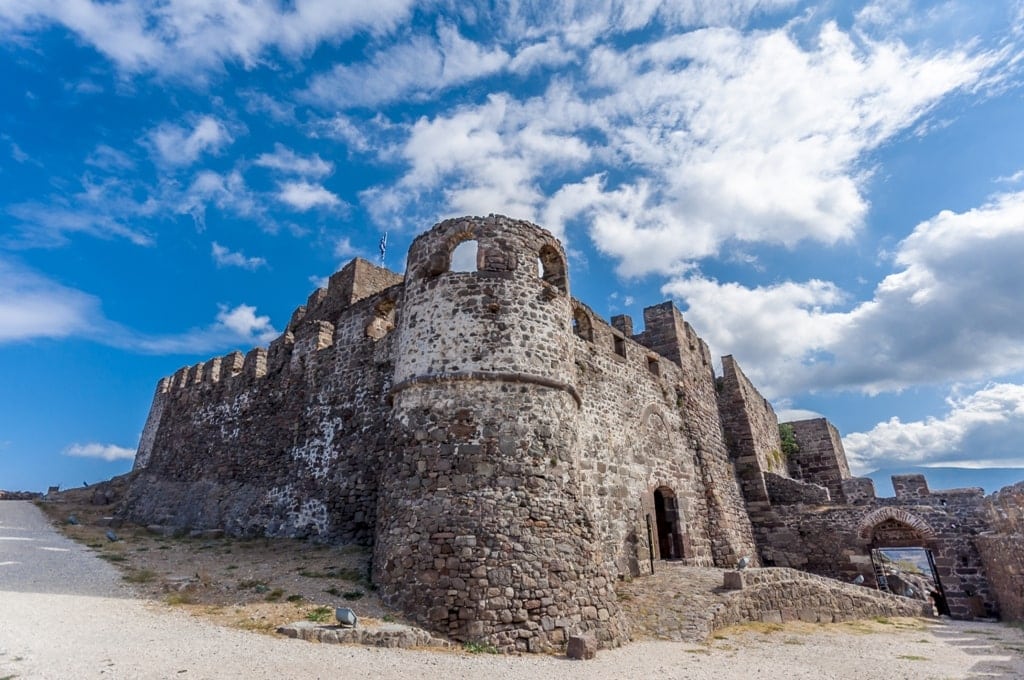
Standing in the far north of the island of Lesbos, Mithymna Castle (or Molyvos Castle as it is also known) stands above the town of the same name. Although there was an ancient Acropolis on the site of the castle since the 5th century BC, the site was likely first fortified by the Byzantines in the 6th century AD.
In 1128 the castle was taken by the Venetians, before falling to the Genoese in the 13th century and finally to the Turks in 1462. The Ottomans made several modifications and additions to the fortification over the years, which can still be seen today.
